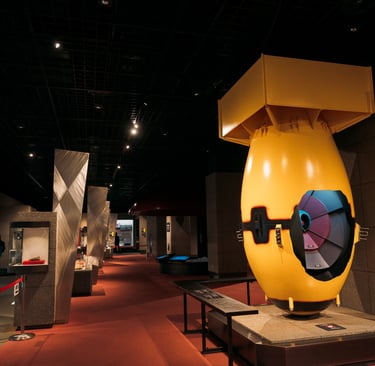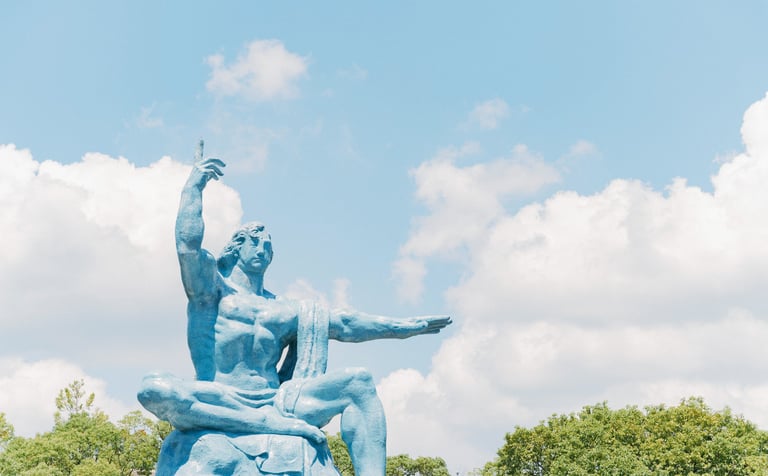The Post-Atomic Bomb Reconstruction of Nagasaki and the Effects of Radiation
11/16/20252 min read


On August 9, 1945, at 11:02 a.m., the atomic bomb dropped on Nagasaki devastated the Urakami area and surrounding districts. The city was reduced to ruins, countless lives were lost, and daily life collapsed in an instant. Yet Nagasaki rose again, rebuilding itself as a city that promotes peace to the world.
Radiation Effects After the Bombing
The atomic bomb released intense heat, a powerful blast, and both initial radiation and residual radiation from fallout.
How long did radiation remain?
Residual radiation existed briefly around the hypocenter, but most radioactive materials had very short half-lives.
Studies by the Nagasaki University Atomic Bomb Research Institute and international agencies show that:
Residual radiation levels dropped sharply within days to weeks,
And within one to two years, radiation levels in the area had fallen to levels safe for normal living.
For this reason, visiting the hypocenter or Peace Park today is completely safe. Homes, schools, and hospitals were built there after the war, and people have lived normal lives for decades.
Long-term health effects on survivors
People who were exposed directly to the strong initial radiation at the time of the explosion suffered long-term health impacts, including higher rates of leukemia and certain cancers. These studies continue today and are important for understanding the real effects of nuclear weapons.
Rebuilding From Rubble (Late 1945–1950s)
After the bombing, the Urakami district was a wasteland. The first efforts focused on clearing debris and building temporary housing. Nagasaki Medical College, though heavily damaged, began treating survivors and later became a global center for atomic-bomb medical research.
Infrastructure and Industrial Recovery (1950s–1960s)
By the 1950s, large-scale reconstruction began. Roads, homes, and shopping districts were rebuilt. The shipbuilding industry, one of Nagasaki’s major sectors, restarted operations and helped restore the city’s economic strength.
Becoming a City of Peace (1960s–Present)
As the city recovered, Nagasaki also developed its identity as a center for peace education.
The Peace Park was established in 1955.
The Peace Statue was erected in 1957.
The Atomic Bomb Museum, originally a small exhibition hall, opened to educate future generations.
Today, students and visitors from around the world come to Nagasaki to learn about its history and the importance of peace.
A Message for the Future
Modern-day Urakami is filled with homes, schools, and hospitals. It is difficult to imagine that this area was once completely destroyed. Nagasaki’s revival was built on compassion, cooperation, and hope.
The story of Nagasaki’s reconstruction is a powerful reminder of human resilience and a message to future generations about the value of peace.


